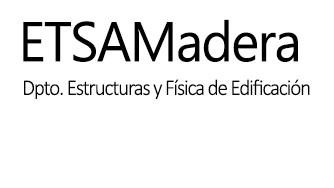
Abstract
The constitutive models used for wood and timber have been formulated in different scales. The term clear wood corresponds to the macroscopic scale, where the orthotropic elastic model is commonly used. This model, which is typically applied to local modeling (e.g. connections), is defined by a compliance matrix composed of nine parameters, the elongations and angular distortions of which are uncoupled. The current experimental standard methods for obtaining these nine parameters are time consuming, as different specimen configurations and careful preparation for specific grain orientation are needed. As different specimens are used and the material properties of wood can vary greatly at a local level, this would have a notable influence on the outcome, as this method is not robust. Optical digital measurements (ODM) are changing and improving these traditional procedures. This work presents a new procedure for determining the compliance matrix of clear wood using just one rectangular prism as a specimen, with an orientation of the grain that does not coincide with the axes defined by the edges of the specimen. The specimen is loaded in the three mutually perpendicular directions defined by the prism, in a single axis load set up using a 3D ODM. The method was initially validated using ARAMIS® 3D, with 5 M pixels, on ash (Fraxinus excelsior L). Reasonable results were obtained, according to the resolution used; however, a higher resolution is needed to attain proper accuracy.
https://doi.org/10.1007/s11340-011-9560-6
